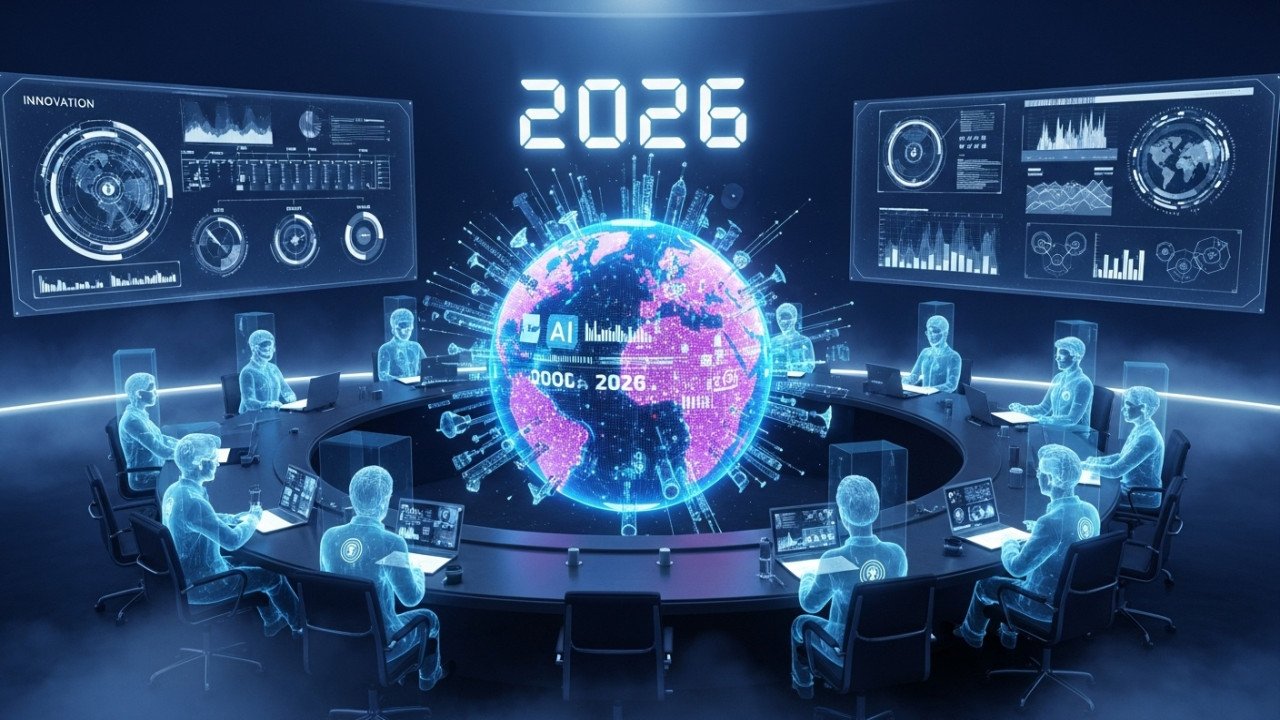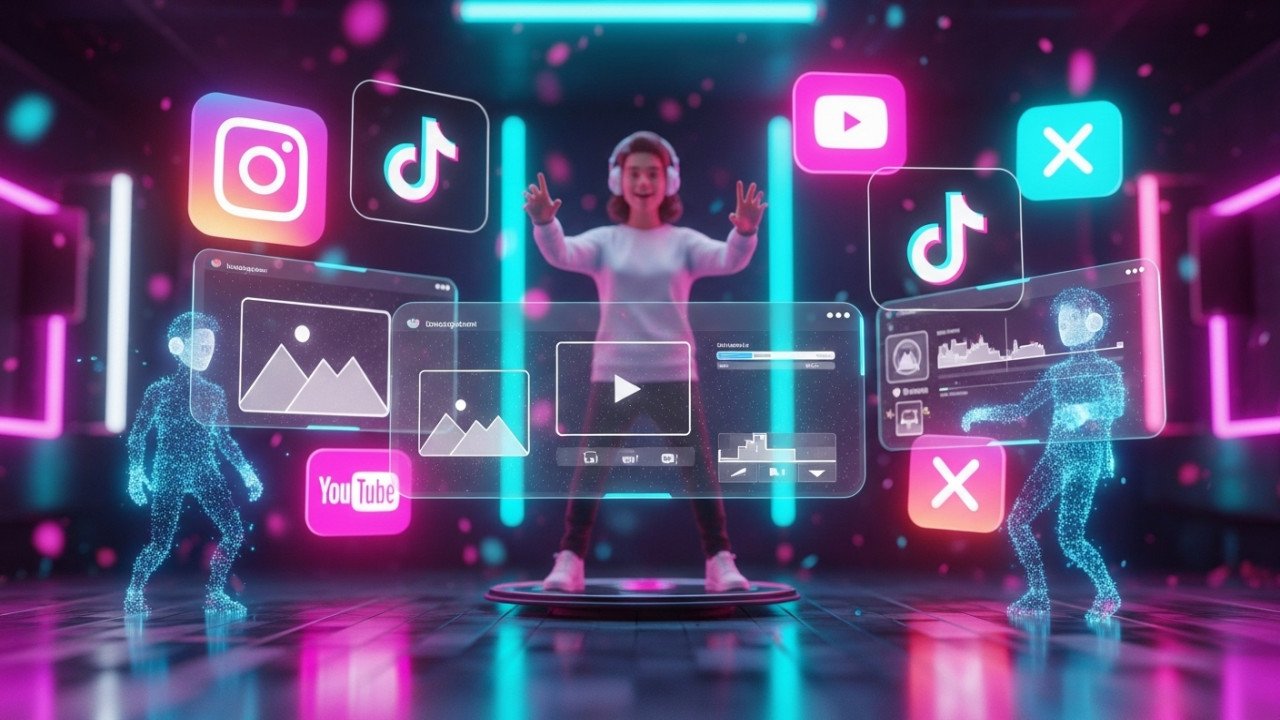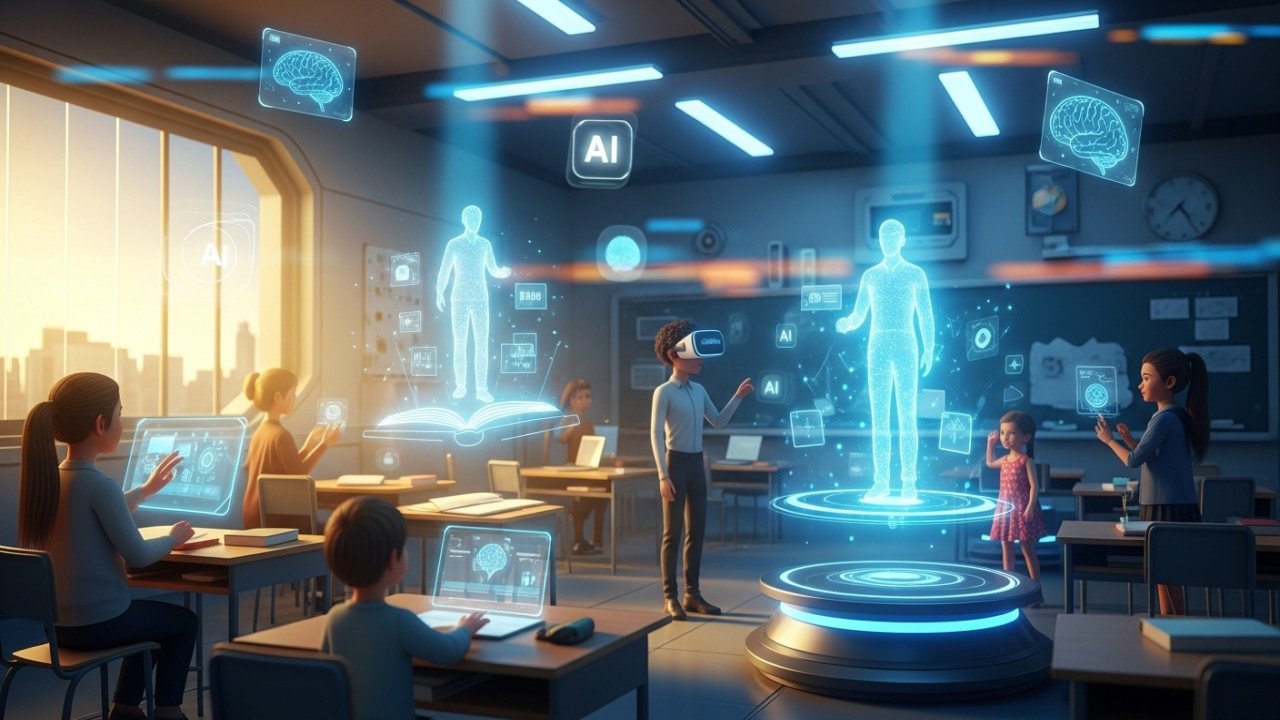How to Write AI Image Prompts: Complete Guide for 2025
How to Write Effective Prompts for Stunning AI-Generated Images
Mastering the art of prompt writing is the secret to unlocking the full potential of AI image generation. While these powerful tools can create incredible visuals, the quality and accuracy of your results depend entirely on how well you communicate your vision through written instructions.
In 2025, AI image generators have become incredibly sophisticated, but they still rely on human creativity and clear communication to produce truly stunning results. Learning to write effective prompts transforms you from a casual user into someone who can consistently generate professional-quality images that match your exact vision.
This comprehensive guide reveals the techniques, strategies, and insider secrets that professionals use to create compelling prompts that consistently deliver exceptional AI-generated images across all major platforms.
Understanding AI Prompt Structure
The Anatomy of a Perfect Prompt
Every effective AI image prompt follows a logical structure that helps the artificial intelligence understand exactly what you want to create. The most successful prompts typically begin with the main subject, followed by descriptive details, style specifications, and technical parameters.
Think of your prompt as a detailed description you might give to a human artist. You need to communicate not just what you want to see, but how you want it to look, feel, and appear. This comprehensive approach ensures the AI has sufficient information to generate images that match your expectations.
The key to prompt structure lies in organizing information hierarchically, starting with the most important elements and gradually adding supporting details. This approach helps AI systems prioritize information correctly and prevents less important details from overwhelming the main concept.
Essential Components of Effective Prompts
A well-crafted prompt typically includes several essential components that work together to guide AI generation. The subject forms the foundation, describing the main focus of your image in clear, specific terms.
Descriptive adjectives enhance the subject by adding important visual details about appearance, mood, and characteristics. These modifiers help the AI understand subtle nuances that differentiate your vision from generic interpretations.
Style and technique specifications guide the artistic approach, helping the AI understand whether you want photorealistic results, specific art styles, or particular rendering techniques that match your intended use case.
Crafting Clear and Specific Descriptions
The Power of Specificity
Vague prompts produce unpredictable results, while specific descriptions consistently generate images closer to your vision. Instead of writing "a dog in a park," try "a golden retriever puppy playing with a red ball on green grass in a sunny neighborhood park."
Specificity helps AI systems make informed decisions about elements you haven't explicitly mentioned. When you provide clear details about key aspects, the AI can make logical assumptions about complementary elements that enhance overall coherence.
However, balance specificity with clarity to avoid overwhelming the AI with contradictory or excessive information. Focus on the most important details that define your vision while leaving room for the AI to contribute creative interpretation.
Using Sensory and Emotional Language
Incorporate sensory details that help the AI understand the atmosphere and mood you want to convey. Words describing lighting, texture, temperature, and emotional tone significantly impact the final image quality and appeal.
Emotional descriptors like "peaceful," "energetic," "mysterious," or "cheerful" help the AI make appropriate choices about composition, color palette, and overall visual treatment that support your intended message.
Texture and material descriptions add realism and visual interest to generated images. Specify whether surfaces should appear smooth, rough, glossy, matte, weathered, or pristine to achieve more convincing and detailed results.
Style and Artistic Direction Keywords
Photography Styles and Techniques
Photography-related keywords help AI systems understand the technical approach you want for realistic images. Terms like "portrait photography," "landscape photography," or "macro photography" immediately establish the appropriate perspective and composition rules.
Camera-specific terminology, such as "shallow depth of field," "wide-angle lens," "telephoto compression," or "bokeh effect,t" guides technical aspects that significantly impact the visual style and professional quality of generated images.
Lighting terminology proves especially powerful for creating mood and atmosphere. Keywords like "golden hour," "studio lighting," "natural light," "dramatic shadows," or "soft diffused light" help establish the photographic quality and emotional tone.
Artistic Styles and Movements
Art style keywords unlock vast creative possibilities by referencing established artistic traditions and movements. Terms like "impressionist," "surreal," "minimalist," or "baroque" immediately establish visual frameworks that guide color, composition, and technique choices.
Contemporary digital art styles such as "cyberpunk," "steampunk," "low poly," or "vaporwave" help generate images that fit specific aesthetic categories popular in modern design and entertainment.
Traditional media references like "oil painting," "watercolor," "pencil sketch," "digital art," or "mixed media" influence the texture and rendering style, creating images that emulate specific artistic techniques and materials.
Cultural and Historical References
Historical period references help establish appropriate styling, architecture, clothing, and cultural context for your images. Keywords like "Victorian era," "medieval," "1950s," or "futuristic" provide comprehensive cultural frameworks.
Cultural style references such as "Japanese minimalism," "Scandinavian design," "Art Deco," or "Mediterranean architecture" help generate images that reflect specific cultural aesthetic traditions and design philosophies.
Genre-specific terms like "fantasy," "sci-fi," "horror," "romantic," or "western" establish thematic contexts that influence every aspect of image generation from color palette to composition choices.
Technical Parameters and Quality Modifiers
Resolution and Quality Keywords
Quality modifiers significantly impact the technical excellence of generated images. Terms like "high resolution," "ultra-detailed," "sharp focus," "crisp," or "HD quality" encourage AI systems to prioritize technical precision and clarity.
Professional terminology such as "commercial photography quality," "magazine cover," "award-winning," or "masterpiece" signals that you want premium results worthy of professional applications and high-stakes use cases.
Specific technical requirements like "4K resolution," "print quality," "web optimized," or "social media format" help ensure generated images meet your intended distribution and usage requirements.
Composition and Framing Terms
Composition keywords help establish how elements should be arranged within the image frame. Terms like "centered composition," "rule of thirds," "symmetrical," "dynamic angle," or "close-up portrait" guide spatial relationships and visual balance.
Perspective terminology such as "bird's eye view," "worm's eye view," "three-quarter angle," or "side profile" establishes the viewpoint and spatial relationship between the viewer and the subject.
Framing concepts like "full body shot," "headshot," "environmental portrait," "wide establishing shot," or "extreme close-up" determine how much of the subject appears in the final image and the level of detail emphasis.
Color, Lighting, and Mood Direction
Color Palette Strategies
Color specifications dramatically influence the emotional impact and visual appeal of generated images. Instead of simply naming colors, describe color relationships, saturation levels, and temperature to achieve more sophisticated results.
Palette descriptions like "warm earth tones," "cool blues and grays," "vibrant neon colors," "muted pastels," or "monochromatic scheme" help establish cohesive color harmony throughout the image.
Color psychology terms such as "calming blues," "energetic reds," "natural greens," or "elegant blacks and whites" connect color choices to emotional goals and intended audience responses.
Lighting Techniques and Effects
Lighting descriptions transform ordinary subjects into compelling visual narratives. Specific lighting keywords like "rim lighting," "backlighting," "side lighting," or "top lighting" create dramatic effects that enhance mood and visual interest.
Atmospheric lighting terms such as "volumetric lighting," "god rays," "ambient lighting," or "dramatic chiaroscuro" add depth and cinematic quality to generated images, making them more engaging and professional-looking.
Time-of-day references like "dawn," "midday," "dusk," or "midnight" establish natural lighting conditions that influence color temperature, shadow direction, and overall atmosphere in outdoor scenes.
Mood and Atmosphere Creation
Emotional atmosphere keywords help AI systems make appropriate choices about all visual elements to support your intended mood. Terms like "serene," "tense," "joyful," "melancholic," or "mysterious" influence everything from composition to color choices.
Weather and environmental conditions, ns such as "foggy," "sunny," "stormy," "calm," or "windy," add atmospheric elements that enhance storytelling and emotional impact while providing natural explanations for lighting and mood.
Seasonal references like "autumn warmth," "winter stillness," "spring freshness," or "summer energy" provide comprehensive atmospheric frameworks that influence multiple visual aspects simultaneously.
Advanced Prompt Techniques
Negative Prompts and Exclusions
Many AI platforms support negative prompts that specify what you don't want in your image. This powerful technique helps avoid common AI mistakes and ensures results align more closely with your vision.
Effective negative prompts might exclude unwanted elements like "no text," "no watermarks," "no blurry details," or specific objects that commonly appear but don't suit your needs.
Quality-focused negative prompts such as "not low quality," "not distorted," "not pixelated," or "not amateur" help push AI systems toward higher-quality outputs by explicitly avoiding common problems.
Weighted Keywords and Emphasis
Advanced users can emphasize important keywords by using techniques like parentheses, brackets, or repetition to signal priority to AI systems. This approach helps ensure critical elements receive appropriate attention.
Keyword weighting might involve placing the most important concepts at the beginning of prompts or using emphasis syntax supported by specific platforms to influence generation priorities.
Balanced emphasis prevents any single element from overwhelming others while ensuring your primary vision remains clear and achievable within the AI's generation capabilities.
Prompt Chaining and Iteration
Successful AI image creation often involves iterative refinement rather than perfect results from single prompts. Use initial generations to identify what works and what needs adjustment for subsequent attempts.
Prompt chaining involves building upon successful elements while modifying problematic aspects, gradually refining your approach until achieving desired results consistently.
Keep detailed records of effective prompts for future reference, building a personal library of successful approaches that can be adapted for new projects and creative challenges.
Platform-Specific Prompt Strategies
DALL-E 2 and DALL-E 3 Optimization
DALL-E models excel at understanding detailed, conversational prompts that read like natural descriptions. These platforms respond well to specific scenarios and contextual details that help establish clear scenes.
The platforms handle complex relationships between objects effectively, making them ideal for prompts that describe interactions, spatial relationships, and narrative elements within single images.
DALL-E systems particularly excel with realistic photography styles and benefit from camera and lighting terminology that photographers would recognize and use in professional contexts.
Midjourney Prompt Techniques
Midjourney responds exceptionally well to artistic and stylistic keywords, making it ideal for creative and artistic image generation. The platform excels when prompts emphasize aesthetic qualities over literal descriptions.
Aspect ratio specifications and style parameters work particularly effectively with Midjourney, allowing fine-tuned control over composition and artistic approach through technical parameters.
The platform's strength in artistic interpretation means shorter, more focused prompts often produce better results than extremely detailed descriptions that might constrain creative possibilities.
Stable Diffusion Customization
Stable Diffusion's flexibility allows for extensive customization through various models and settings, making it important to understand which model versions work best for different prompt styles.
The platform benefits from technical terminology and specific style references that help guide the selection of appropriate generation parameters and model approaches.
Community resources provide extensive prompt libraries and techniques specific to Stable Diffusion, offering valuable learning opportunities for users seeking to maximize results.
Common Prompt Writing Mistakes
Overcomplication and Contradiction
One of the most common mistakes involves overloading prompts with excessive details that confuse rather than clarify your vision. AI systems work best with clear, focused directions rather than overwhelming information.
Contradictory instructions within single prompts create confusion and unpredictable results. Avoid combining incompatible elements like "bright daylight" and "candlelit atmosphere" in the same image description.
Maintain logical consistency throughout your prompts, ensuring all elements work together to support a cohesive vision rather than competing for the AI's attention and interpretation.
Vague or Generic Descriptions
Generic prompts like "beautiful landscape" or "nice portrait" provide insufficient guidance for AI systems to create distinctive or compelling images. Specificity drives quality and uniqueness in AI generation.
Avoid relying on subjective terms without supporting details that explain what makes something "beautiful," "interesting," or "cool" in your specific context and vision.
Replace vague modifiers with concrete descriptions that help AI systems make specific decisions about colors, composition, lighting, and style elements.
Ignoring Platform Limitations
Different AI platforms have various strengths and limitations that affect how prompts should be constructed. Understanding these differences helps optimize results for each specific tool.
Some platforms struggle with text within images, complex hand positions, or specific technical details, making it important to adjust expectations and prompt strategies accordingly.
Research platform-specific capabilities and limitations before crafting prompts, ensuring your requests align with what each tool can reasonably accomplish.
Testing and Refining Your Prompts
Systematic Experimentation Approaches
Develop systematic approaches to prompt testing that help identify which elements produce desired effects and which modifications improve results consistently.
Change one element at a time when refining prompts, making it easier to understand how specific modifications influence final results and building knowledge for future projects.
Keep detailed records of prompt experiments, noting which approaches work well for different types of images and creative goals, building a valuable reference library.
Learning from Results Analysis
Analyze generated images carefully to understand how AI systems interpreted your prompts, identifying successful elements and areas needing improvement for future attempts.
Pay attention to unexpected but positive results that might suggest new creative directions or techniques you hadn't previously considered exploring.
Use unsuccessful attempts as learning opportunities, examining why certain approaches didn't work and how alternative phrasing or structure might achieve better results.
Building Your Prompt Library
Develop a personal collection of effective prompts organized by style, subject matter, and use case, making it easier to adapt successful approaches to new projects.
Include notes about specific platform performance and any modifications that improved results, creating comprehensive resources for consistent future success.
Share successful prompts with communities and learn from others' experiences, contributing to collective knowledge while expanding your own prompt-writing capabilities.
Conclusion
Writing effective prompts for AI image generation is both an art and a science that improves dramatically with practice and systematic learning. The techniques covered in this guide provide a foundation for creating consistently stunning results across all major AI platforms.
Remember that prompt writing is an iterative process that rewards experimentation, patience, and careful observation of results. Start with basic techniques and gradually incorporate advanced strategies as you develop confidence and understanding.
The future of AI image generation will likely bring even more sophisticated systems that understand human intent more naturally, but the fundamental principles of clear communication and creative vision will always remain essential for achieving exceptional results.
Master these prompt writing techniques, and you'll unlock the full creative potential of AI image generation, consistently producing stunning visuals that bring your imagination to life with remarkable precision and artistic quality.
Read also: Top 10 Free AI Image Generator Websites You Should Try.












Comments (0)
No comments found